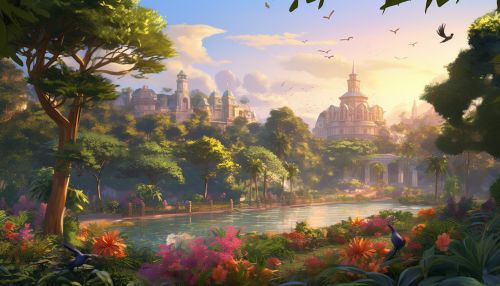The Ecology of Urban Biodiversity
Introduction
Urban biodiversity refers to the variety of life forms found in human settlements. This includes all living organisms such as plants, animals, and microorganisms existing in urban areas like cities and towns. The study of urban biodiversity and its importance is a relatively new field in ecology, but it has gained significant attention due to the rapid urbanization of our planet.


Urban Ecosystems
Urban ecosystems are complex and dynamic systems shaped by both human and natural processes. They are characterized by a high degree of heterogeneity, both in terms of their physical structure (e.g., buildings, roads) and the species that inhabit them. The urban environment is often seen as a hostile place for wildlife due to the high levels of disturbance, pollution, and habitat fragmentation. However, many species have adapted to these conditions and thrive in urban areas.
Biodiversity in Urban Areas
Despite the challenges, urban areas can host a surprising amount of biodiversity. This is due to a variety of factors, including the presence of a wide range of habitats (e.g., parks, gardens, rivers, wastelands), the introduction of non-native species, and the often milder climate compared to surrounding rural areas.
Flora
Urban flora includes a wide range of plant species, from trees and shrubs to grasses and herbs. Many of these plants are intentionally planted for aesthetic or practical reasons, but others are spontaneous, growing without human intervention. Urban flora plays a crucial role in urban ecosystems, providing food and habitat for fauna, improving air quality, and contributing to the aesthetic value of the city.
Fauna
Urban fauna includes a wide variety of animals, from mammals and birds to insects and other invertebrates. Some species, such as pigeons, rats, and cockroaches, are often seen as pests, but many others, like songbirds, butterflies, and bees, are appreciated for their beauty and ecological role. Urban fauna contributes to the control of pests, pollination of plants, and decomposition of organic matter.
Benefits of Urban Biodiversity
Urban biodiversity provides numerous benefits, both direct and indirect, to urban dwellers. These benefits, also known as ecosystem services, include:
Provisioning Services
Urban biodiversity can provide food (e.g., fruits, vegetables, honey), raw materials (e.g., wood, medicinal plants), and genetic resources.
Regulating Services
Urban biodiversity contributes to climate regulation (e.g., through carbon sequestration), air and water purification, waste decomposition, and pest control.
Cultural Services
Urban biodiversity contributes to the aesthetic value of the city, provides opportunities for recreation and education, and can improve mental health.
Threats to Urban Biodiversity
Urban biodiversity faces several threats, including habitat destruction and fragmentation, pollution, invasive species, and climate change. These threats can lead to a loss of biodiversity, with negative impacts on ecosystem functioning and the provision of ecosystem services.
Conservation of Urban Biodiversity
Conserving urban biodiversity requires a combination of measures, including the protection and restoration of natural habitats, the creation of green spaces, the use of native plant species in landscaping, and the control of invasive species. Public education and involvement are also crucial for the success of conservation efforts.
